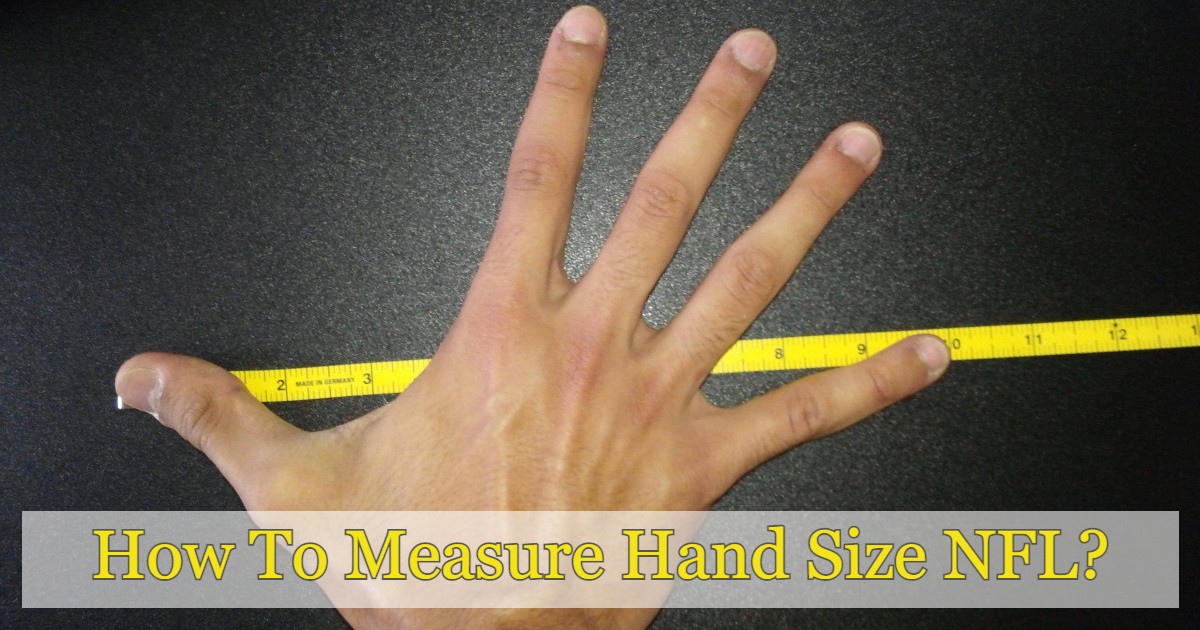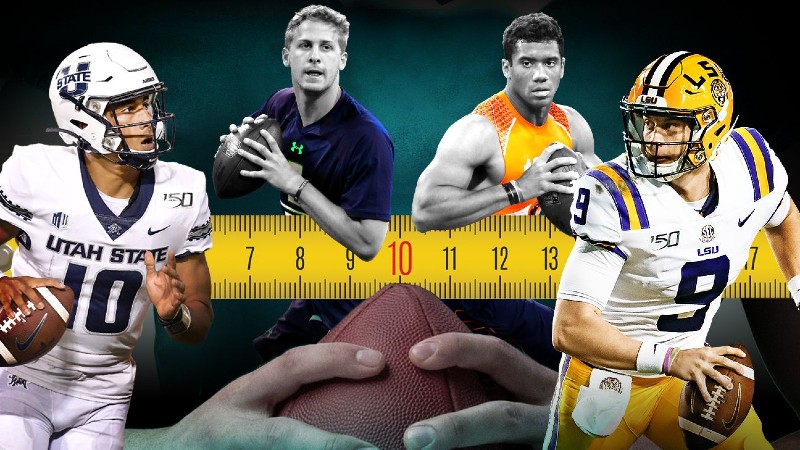Hand size is an important part of the overall athletic profile of an NFL player. In fact, having big hands has been shown to improve grip strength which is key for breaking tackles, as well as making catches.
Hand size is one of the most important factors for wide receivers and defensive backs, as it helps them secure interceptions and make plays.
How to measure hand size NFL? To find out if you are in the average range, use a tape measure to see how long your fingers are. The thumb and finger should form an “O”; so if your finger ends at that point of your thumb, you are probably average.

Importance of The Right Hand Size In NFL
Content Summery
Hand size is an important measurement in the NFL Draft. It is a measurement that teams use to determine if a player can play in the league. There are other measurements that teams use, but hand size is one of the most important.
Hand size is described as the width of your hand from thumb to pinky, excluding any fingers that stick out of the palm. The average male has a hand size of 9 inches, but that varies depending on who you are talking about.
If you have big hands and long fingers, then you would be considered a great athlete by most scouts in football or basketball.
The importance of hand size comes into play when you look at how much space there is between your fingers and how much surface area they cover. The bigger your hands are, the easier it will be for you to catch passes without fumbling them or dropping them while running downfield with them in your hands.
How to Measure Hand Size NFL?
Among the most important measurements for the NFL is the size of the player’s hand. If a quarterback has a small hand size, it means that he is more likely to drop the ball and less likely to throw accurate passes.
The average hand size NFL quarterback is 9 inches. If you are interested in becoming a professional athlete, then you need to know how to measure your hand size properly.
The first step in measuring your hand size is to determine what shape of hand you have, which will determine how many fingers you need to measure. Small hands typically consist of a short, wide palm and short fingers; medium hands are slightly longer and wider than small hands; and large hands are big and broad.
There are three different methods for measuring a player’s hand size NFL:
- Measurement 1 – Using a piece of string or tape measure and a ruler, measure your wristbone from the tip of your middle finger. This is measured around the widest part of your palm.
- Measurement 2 – Place your thumb on top of your index finger with your palm facing upward. Take a measurement starting at the tip of your thumb and ending at the base of your index finger (the crease). Measure in inches using a ruler or tape measurer.
- Measurement 3 – Take an existing piece of clothing or accessory (such as a hat) and hold it against a ruler or straight edge while measuring from one end to another on the inside seam or fold line (not across the material itself).
Note: This measurement can be used if you do not have access to either of the above methods or if you need a backup measurement that can be used anywhere at any time without needing additional items such as string or tape measurer.
NFL Hand Size Chart
As reported by ESPN Stats and Information, from 2008 to 2020, there has been a significant increase in the size of the hands of NFL quarterbacks selected in the first round of the NFL Scouting Combine. There was an average width of 9 7/10 inches among these players.
NFL quarterback hand sizes (via Rotoworld):
- Drew Brees (10.25 inches)
- Russell Wilson(10.25 inches)
- Paxton Lynch (11.5 inches)
- Brett Favre (10.38 inches)
- Michael Vick (historically small 8.5-inch hands)
- Colin Kaepernick (9.13 inches)
- Cam Newton (97/8)
- Andy Dalton (9 1/2 inches)
- Robert Griffin III (9.5 inches)
- Joe Flacco (9.63 inches)
- Daunte Culpepper (9.5 inches)
- Tom Brady (enormous hand,” according to NFL guy Scott Pioli)
- Aaron Rodgers (9.38 inches)
- Teddy Bridgewater (9 1/4)
- Tony Romo (8.86 inches)
- AJ McCarron (10 inches)
- Cardale Jones (9 3/4)
- Derek Carr (9 1/8)
- Ryan Tannehill (9 inches)
- Johnny Manziel (9 7/8)
The hand size of many players has been valued, for better or for worse, depending on their position in the game. For instance, Tom Brady had big hand size, which was one of the key reasons the Ravens decided he was their pick because games in the AFC North are generally characterized by bad weather as a whole.
Final Words
In the final words, you can use a tape measure to measure the length of your hand. The measurement that is most important for finding the right grip for you is the length.
Measure from the base of your middle finger down to the end of your wrist bone or where your wrist joins with your hand. You can find this by making a fist with your other or opposite hand and measuring where it ends exactly 2-3 inches down from there.

FAQs
Q. How is the NFL hand size measured?
NFL hand measurements are taken from the tip of the middle finger to the end of the wrist bone. The measurement is usually in inches and can vary depending on how tight or loose your grip is.
Q. What is the average hand size in the NFL?
The average hand size in the NFL is 9 to 9.5 inches, with a circumference of 7 inches. The smallest hands in the league are usually between 8-1/2 and 8-3/4 inches, while the largest is 10-1/2 inches or larger.
Q. What NFL QB has the smallest hands?
A current record holder for this short-hand size is Taysom Hill of the New Orleans Saints, who holds the record at 8 3/4 inches.
Q. Are 9-inch hands big?
9-inch hands are considered the average size for a man. Anything above 9 to 9.5 inches is considered large, and anything below that is considered small. The average size for a woman is 6-1/4 inches or less, with a circumference of 4 1/2 inches or less.
